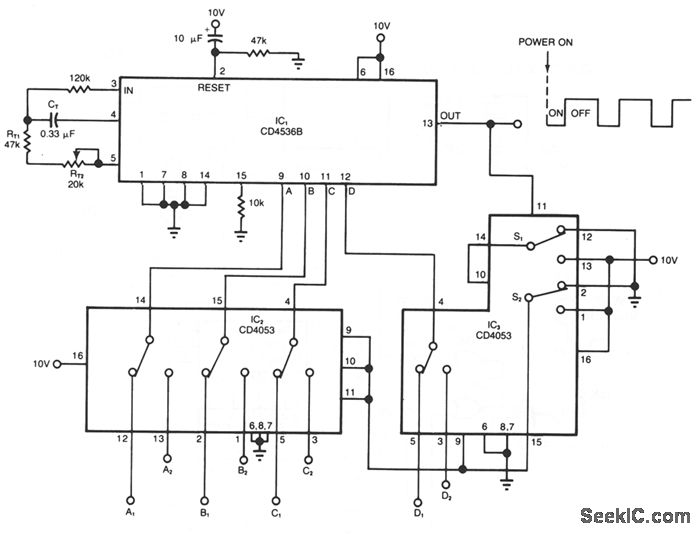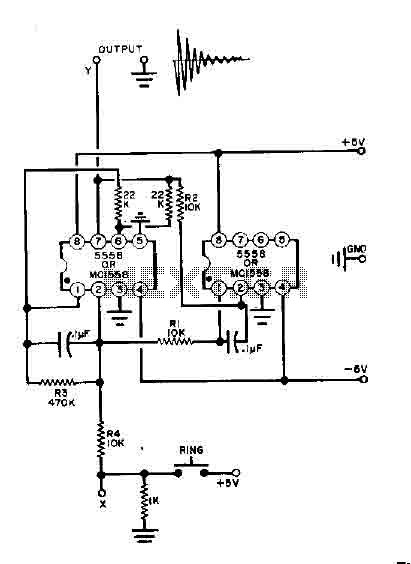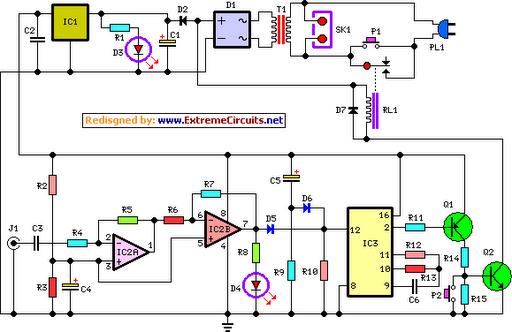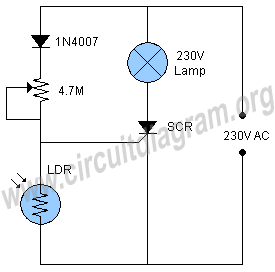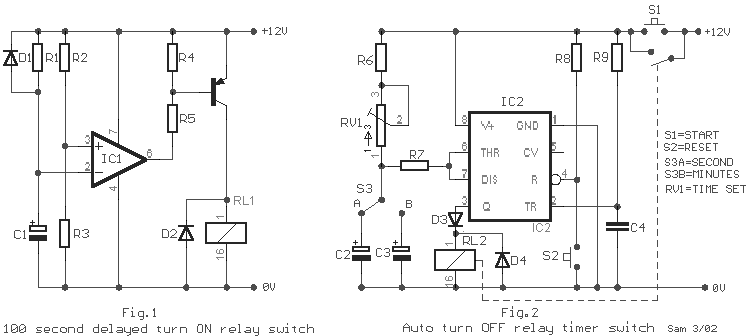
Lamp Timer
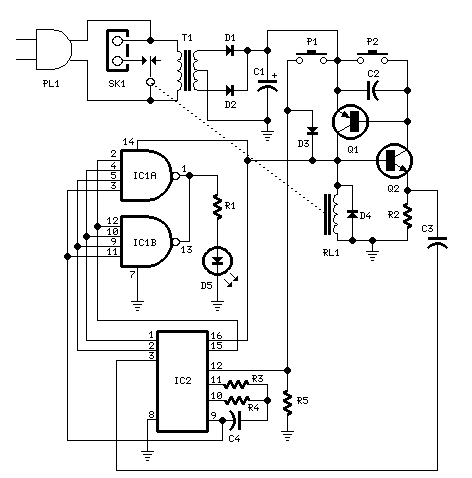
The purpose of this circuit is to power a lamp or other appliance for a given time (30 minutes in this case), and then to turn it off. It is useful when reading at bed by night, turning off the bedside lamp automatically in case the reader falls asleep... 30 minutes operation Blinking LED signals 6 last minutes before turn-off More: After turn-on by P1 pushbutton, the LED illuminates for around 25 minutes, but then it starts to blink for two minutes, stops blinking for two minutes and blinks for another two just before switching the lamp off, thus signaling that the on-time is ending.
The circuit described is a timed relay switch designed to control the power to a lamp or similar appliance, allowing it to operate for a predetermined duration of 30 minutes. This functionality is particularly beneficial for users who may fall asleep while reading, as it provides an automatic shut-off feature that enhances safety and convenience.
The circuit is initiated by a pushbutton switch, labeled P1, which serves as the primary input for activating the timer. Upon pressing P1, the circuit begins its operation. For the first 25 minutes, an LED indicator remains illuminated, signaling that the lamp is powered on. This initial phase provides a clear visual cue to the user that the device is active.
As the timer approaches the end of the 30-minute period, the LED's behavior changes to indicate the impending shut-off. The LED begins a blinking sequence, which lasts for a total of 6 minutes. This sequence is divided into three distinct phases: the LED blinks for 2 minutes, then remains off for the next 2 minutes, and finally blinks again for the last 2 minutes leading up to the shut-off. This blinking pattern serves as a warning, alerting the user that the lamp will soon turn off.
The timing mechanism is likely implemented using a timer IC (such as the NE555) configured in monostable mode or a microcontroller programmed to handle the timing logic. The relay or transistor switch used to control the lamp's power supply will be activated by the output of the timer circuit, ensuring that the lamp is powered off after the designated time has elapsed.
In summary, this circuit effectively combines a timed relay switch with visual indicators to create a user-friendly solution for automatically turning off a lamp after a specified duration, enhancing both safety and convenience for nighttime reading.The purpose of this circuit is to power a lamp or other appliance for a given time (30 minutes in this case), and then to turn it off. It is useful when reading at bed by night, turning off the bedside lamp automatically in case the reader falls asleep...
30 minutes operation Blinking LED signals 6 last minutes before turn-off After turn-on by P1 pushbutton, the LED illuminates for around 25 minutes, but then it starts to blink for two minutes, stops blinking for two minutes and blinks for another two just before switching the lamp off, thus signaling that the on-time is ending 🔗 External reference
The circuit described is a timed relay switch designed to control the power to a lamp or similar appliance, allowing it to operate for a predetermined duration of 30 minutes. This functionality is particularly beneficial for users who may fall asleep while reading, as it provides an automatic shut-off feature that enhances safety and convenience.
The circuit is initiated by a pushbutton switch, labeled P1, which serves as the primary input for activating the timer. Upon pressing P1, the circuit begins its operation. For the first 25 minutes, an LED indicator remains illuminated, signaling that the lamp is powered on. This initial phase provides a clear visual cue to the user that the device is active.
As the timer approaches the end of the 30-minute period, the LED's behavior changes to indicate the impending shut-off. The LED begins a blinking sequence, which lasts for a total of 6 minutes. This sequence is divided into three distinct phases: the LED blinks for 2 minutes, then remains off for the next 2 minutes, and finally blinks again for the last 2 minutes leading up to the shut-off. This blinking pattern serves as a warning, alerting the user that the lamp will soon turn off.
The timing mechanism is likely implemented using a timer IC (such as the NE555) configured in monostable mode or a microcontroller programmed to handle the timing logic. The relay or transistor switch used to control the lamp's power supply will be activated by the output of the timer circuit, ensuring that the lamp is powered off after the designated time has elapsed.
In summary, this circuit effectively combines a timed relay switch with visual indicators to create a user-friendly solution for automatically turning off a lamp after a specified duration, enhancing both safety and convenience for nighttime reading.The purpose of this circuit is to power a lamp or other appliance for a given time (30 minutes in this case), and then to turn it off. It is useful when reading at bed by night, turning off the bedside lamp automatically in case the reader falls asleep...
30 minutes operation Blinking LED signals 6 last minutes before turn-off After turn-on by P1 pushbutton, the LED illuminates for around 25 minutes, but then it starts to blink for two minutes, stops blinking for two minutes and blinks for another two just before switching the lamp off, thus signaling that the on-time is ending 🔗 External reference
